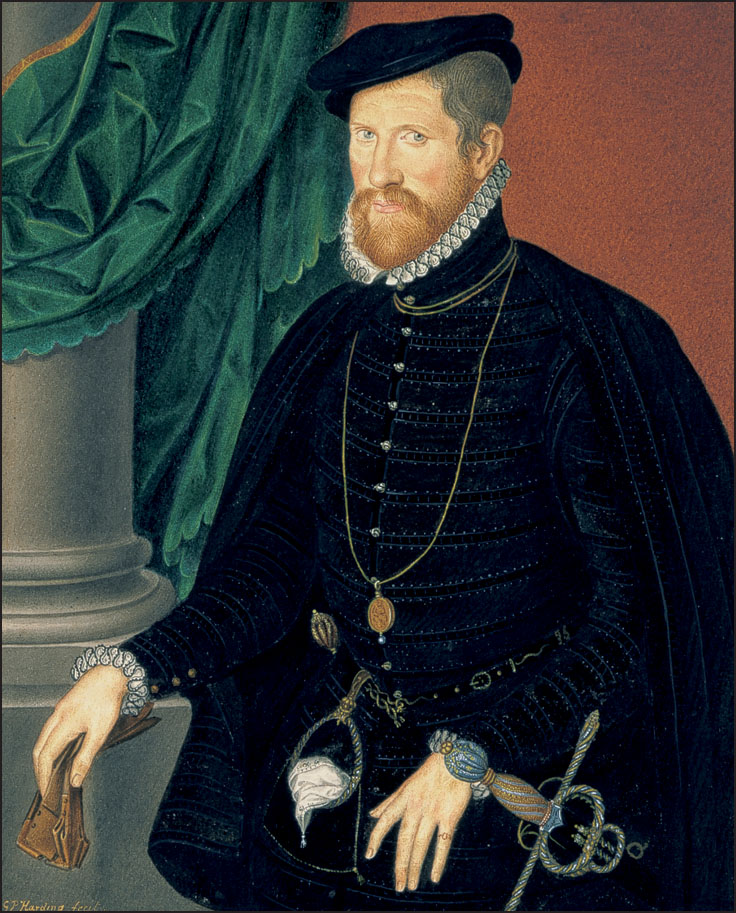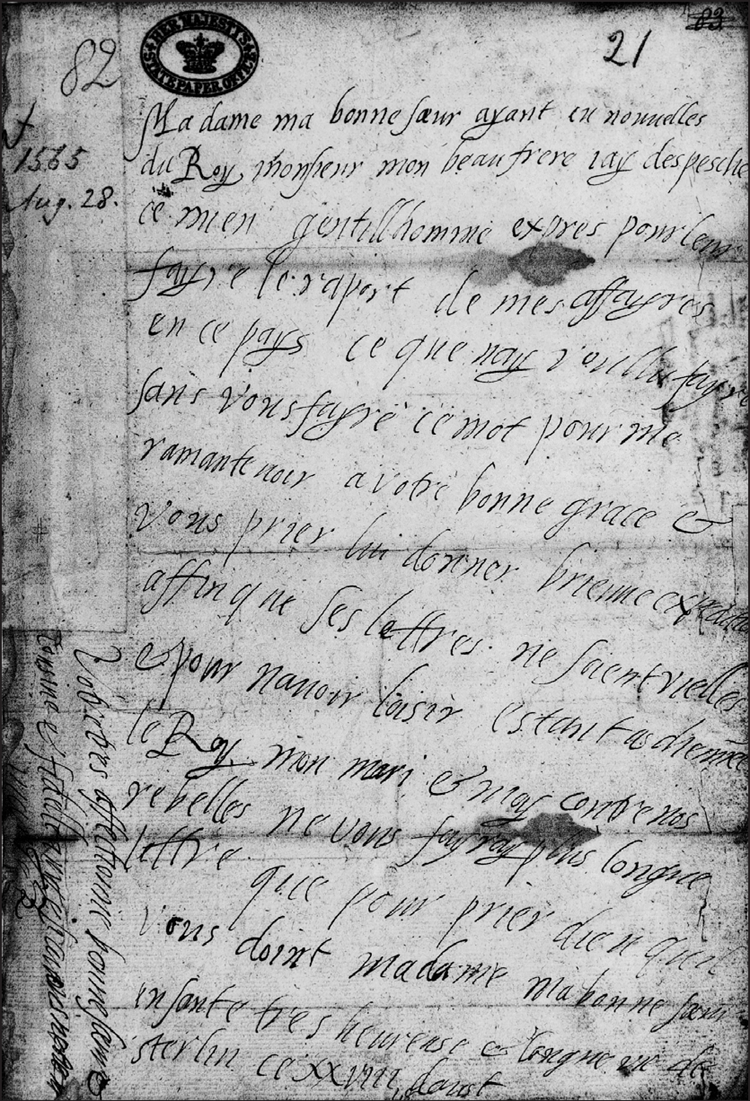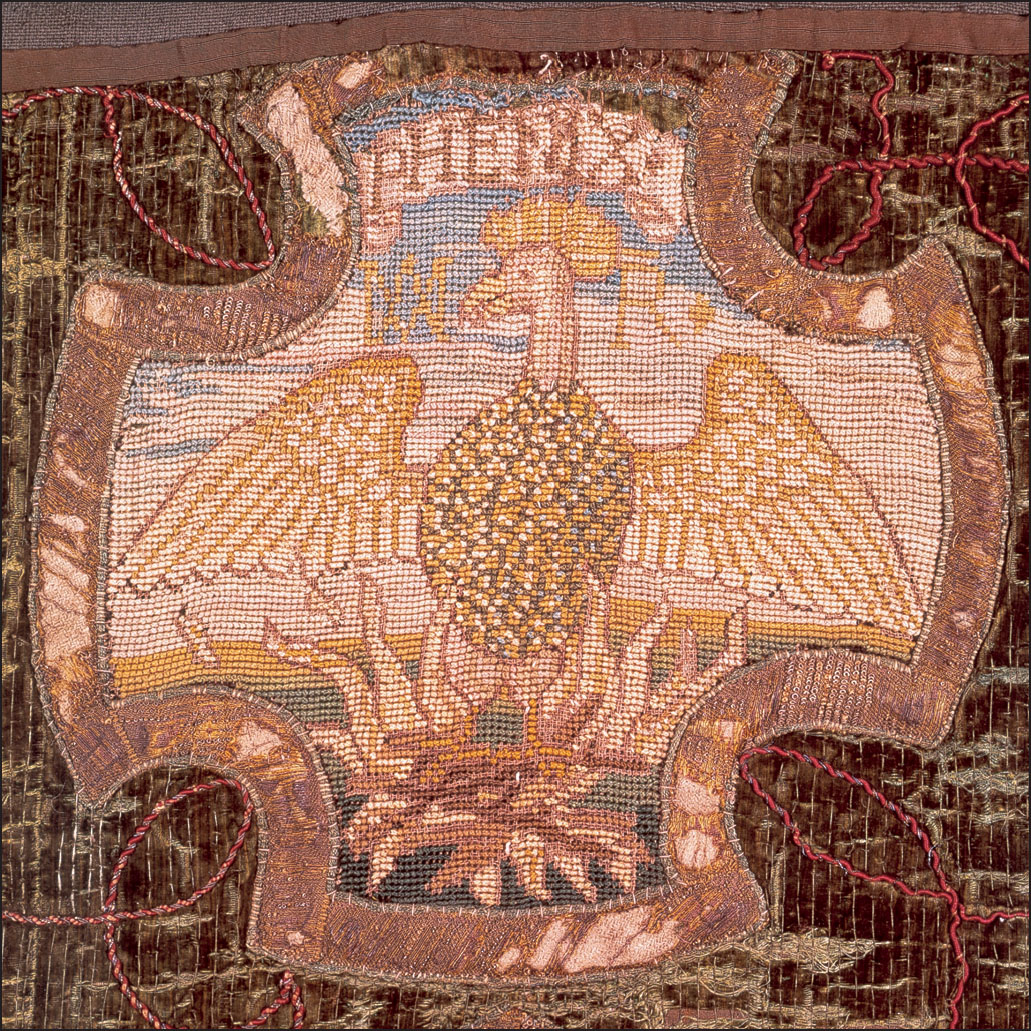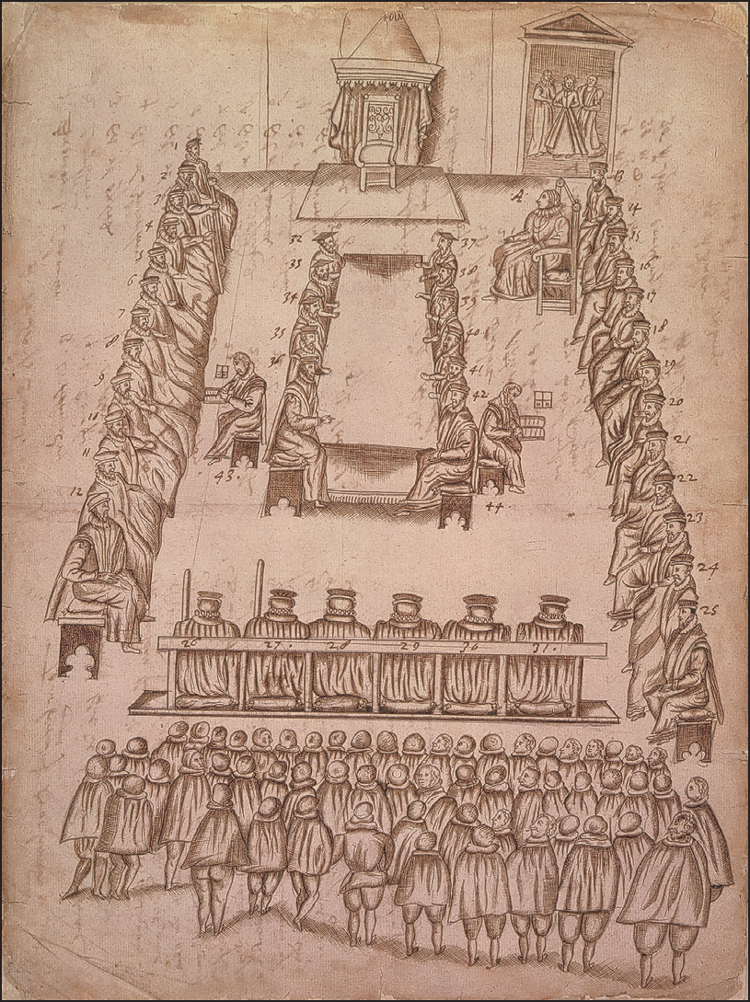

Linlithgow Palace, Mary’s birthplace, from Theatrum Scotiae (London, 1718).

Mary of Guise, mother of Mary Queen of Scots.

Henry VIII, aged about fifty-two, a year or so before the first of the ‘Rough Wooings’.

Antoinette of Bourbon, grandmother of Mary Queen of Scots.

Prince Edward, Henry VIII’s son and heir, as a child holding a rattle.

The Dauphin Francis, Henry II’s eldest son, aged eight.

Elizabeth, Henry II’s eldest daughter, aged fourteen.

Mary, aged nine.

Mary, aged fifteen, shortly before her wedding to the Dauphin.

Henry II on his deathbed. Mary can be seen in profile with the family at the foot of the bed.

Double portrait of Francis and Mary as King and Queen of France on vellum.

Catherine de Medici dressed as a widow, by François Clouet.

Mary’s first letter to a foreign ruler, sent to Mary Tudor in January 1554.

An artist’s impression of Francis II’s coronation at Rheims.

Mary in her deuil blanc or white mourning clothes.

Sir Nicholas Throckmorton, Elizabeth I’s special ambassador to France and Scotland.

James Stuart, Earl of Moray, Mary’s half-brother.

James Douglas, 4th Earl of Morton.

William Cecil aged forty-two. A design he chose for his funeral monument at Stamford in Lincolnshire, where he depicted himself as a Protestant chivalric knight.

Charles, Cardinal of Lorraine, Mary’s uncle.

John Knox haranguing Mary with his theories of lawful resistance to rulers.

The palace of Holyroodhouse showing the James V Tower (left), engraving after J. Gordon, 1647.

Elizabeth I holding a sieve, a symbol of chastity and her refusal to marry, by Federico Zuccaro.

Lord Darnley, aged about nine, by Hans Eworth.

Lord Darnley, aged about seventeen or eighteen.

The Lennox Jewel.

Mary’s letter to Elizabeth, dated 28 August 1565, asking for a speedy passage through England for the courier bearing her letters to Charles IX of France requesting aid against her Scottish rebels.

James Hepburn, Earl of Bothwell, aged thirty.

Mary with a hat and feather, copied from a miniature.

The first page of the English translation of the Long Glasgow Letter (Casket Letter 2).

A transcript in French of Casket Letter 5 in the hand of one of the clerks to Moray’s delegation.

Narrative drawing of Darnley’s assassination sent by Sir William Drury to Cecil, showing the Old Provost’s Lodging as a heap of rubble (left centre), the bodies in the garden on the opposite side of Thieves Row (top right), Darnley’s body being carried away (below left), the cottages built into the garden wall not far from where the bodies were found (lower centre), and the future James VI in his cradle praying, ‘Judge and revenge my cause, O Lord’ (top left).

Placard of the Mermaid and the Hare.

Narrative drawing of Mary’s surrender at Carberry Hill, showing Mary on horseback still wearing her borrowed clothes (centre) as she was led across the field towards the army of the rebel Lords, followed by Mary Seton on her pony.

Mary’s smuggled letter to Sir Nicholas Throckmorton appealing for help, ‘from my prison in the tower of Lochleven’.

A version of Nicholas Hilliard’s miniature of Mary in captivity, aged about thirty-six.

Bess of Hardwick, with whom Mary talked and embroidered during the first ten years of her captivity.

Mary’s embroidery of a phoenix from the panels now at Oxburgh Hall.

Mary’s embroidery of ‘A Catte’, now at Oxburgh Hall.

Sir Francis Walsingham, by John de Critz the Elder.

Mary’s ‘alphabet of ciphers’ seized from Chartley after the discovery of the Babington plot.

A narrative drawing of Mary’s trial at Fotheringhay Castle. Mary watched by two gentlewomen is about to enter the court room (top right), she sits in a high-backed chair (upper right, marked ‘A’), Elizabeth did not attend and her chair of state on the dais is empty (top centre). The trial commissioners and clerks sit in the main body of the court room, watched by the local gentry. The trial commissioners are identified by numbers. Cecil, diametrically opposite Mary, is ‘2’, Walsingham opposite the vacant chair of state is ‘28’. Sir Ralph Sadler is ‘29’ and Sir Amyas Paulet ‘31’.

Mary’s execution at Fotheringhay, Netherlandish school, 17th century.